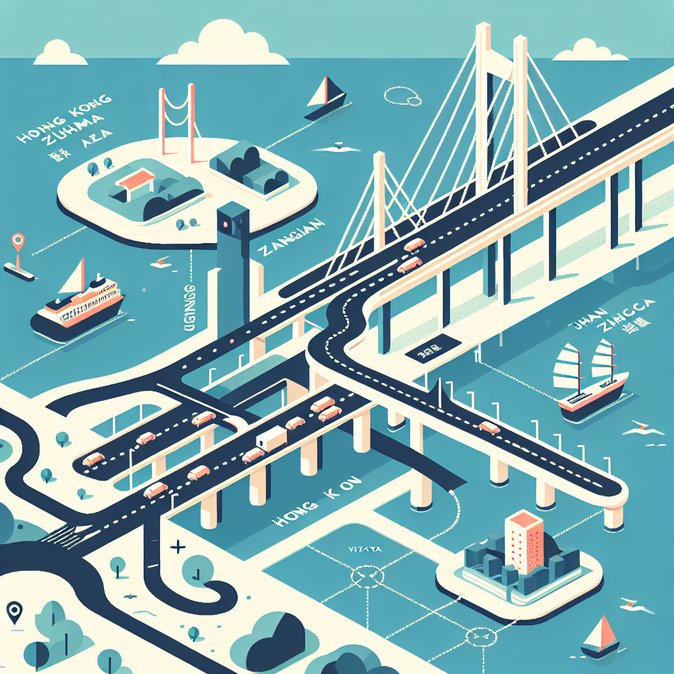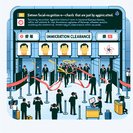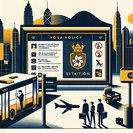
Cross-border road mobility between Hong Kong and mainland China entered a new era on 1 November 2025 as authorities in Guangdong and the Hong Kong SAR formally activated the much-anticipated “粤车南下”(Yue Che Nan Xia, literally “Guangdong cars head south”) policy. From 09:00 today, owners of private cars registered in Guangzhou, Zhuhai, Jiangmen and Zhongshan can log on to the Hong Kong Airport Authority’s online portal to reserve parking bays at Hong Kong International Airport (HKIA). Once a slot is confirmed, motorists will be allowed—starting 15 November—to drive across the Hong Kong-Zhuhai-Macao Bridge (HZMB) into a new fully automated car park on the bridge’s Hong Kong boundary island without the need for a separate Hong Kong driving permit.
The reform is the mirror image of last year’s wildly popular “港车北上” arrangement that lets Hong Kong residents take their own vehicles into Guangdong. Officials say the southbound scheme will strengthen two-way business, tourism and family links within the Greater Bay Area by creating the first truly bidirectional, permit-light corridor for private vehicles. Phase one caps eligibility at the four pilot cities and limits traffic to the airport car park, but policy makers have already inked regulations that will eventually open Hong Kong urban roads to mainland cars through a quota lottery system scheduled to begin accepting applications on 1 December.
![Guangdong’s “Yue Che Nan Xia” Scheme Opens: Private Cars from Four Cities Can Drive into Hong Kong from 15 November—Bookings Start Today]()
For business travellers, the immediate benefit is seamless door-to-door access to HKIA, cutting an estimated 90 minutes off typical coach or ferry transfers. Companies based in the Pearl River Delta can now dispatch staff to early-morning long-haul flights without overnighting in Hong Kong, while freight forwarders gain a new option for just-in-time hand-carry shipments. Travel consultants predict that the policy could divert as many as 2,000 passengers a day from Guangzhou Baiyun and Shenzhen Bao’an airports once the quota is fully rolled out.
Compliance is relatively straightforward. Drivers must hold a Mainland driving licence, purchase Hong Kong third-party insurance, and pass vehicle inspection standards identical to those applied in the northbound scheme. Electronic tolling on the HZMB and automatic licence-plate recognition at the border car park mean that most crossings will be completed without paperwork. However, business-risk managers should note that urban-area access will remain subject to a daily cap of 100 vehicles during the initial December lottery and that congestion charges inside Hong Kong will still apply.
Analysts view “Yue Che Nan Xia” as another tangible step toward an integrated cross-boundary transport network that underpins Beijing’s blueprint to turn the Greater Bay Area into a 100-million-resident mega-city economy. If the pilot proves smooth, Guangdong officials say they will extend eligibility to the province’s other 17 municipalities within six months, potentially unleashing a wave of weekend shoppers and corporate commuters into Hong Kong’s service sector.
The reform is the mirror image of last year’s wildly popular “港车北上” arrangement that lets Hong Kong residents take their own vehicles into Guangdong. Officials say the southbound scheme will strengthen two-way business, tourism and family links within the Greater Bay Area by creating the first truly bidirectional, permit-light corridor for private vehicles. Phase one caps eligibility at the four pilot cities and limits traffic to the airport car park, but policy makers have already inked regulations that will eventually open Hong Kong urban roads to mainland cars through a quota lottery system scheduled to begin accepting applications on 1 December.

For business travellers, the immediate benefit is seamless door-to-door access to HKIA, cutting an estimated 90 minutes off typical coach or ferry transfers. Companies based in the Pearl River Delta can now dispatch staff to early-morning long-haul flights without overnighting in Hong Kong, while freight forwarders gain a new option for just-in-time hand-carry shipments. Travel consultants predict that the policy could divert as many as 2,000 passengers a day from Guangzhou Baiyun and Shenzhen Bao’an airports once the quota is fully rolled out.
Compliance is relatively straightforward. Drivers must hold a Mainland driving licence, purchase Hong Kong third-party insurance, and pass vehicle inspection standards identical to those applied in the northbound scheme. Electronic tolling on the HZMB and automatic licence-plate recognition at the border car park mean that most crossings will be completed without paperwork. However, business-risk managers should note that urban-area access will remain subject to a daily cap of 100 vehicles during the initial December lottery and that congestion charges inside Hong Kong will still apply.
Analysts view “Yue Che Nan Xia” as another tangible step toward an integrated cross-boundary transport network that underpins Beijing’s blueprint to turn the Greater Bay Area into a 100-million-resident mega-city economy. If the pilot proves smooth, Guangdong officials say they will extend eligibility to the province’s other 17 municipalities within six months, potentially unleashing a wave of weekend shoppers and corporate commuters into Hong Kong’s service sector.










